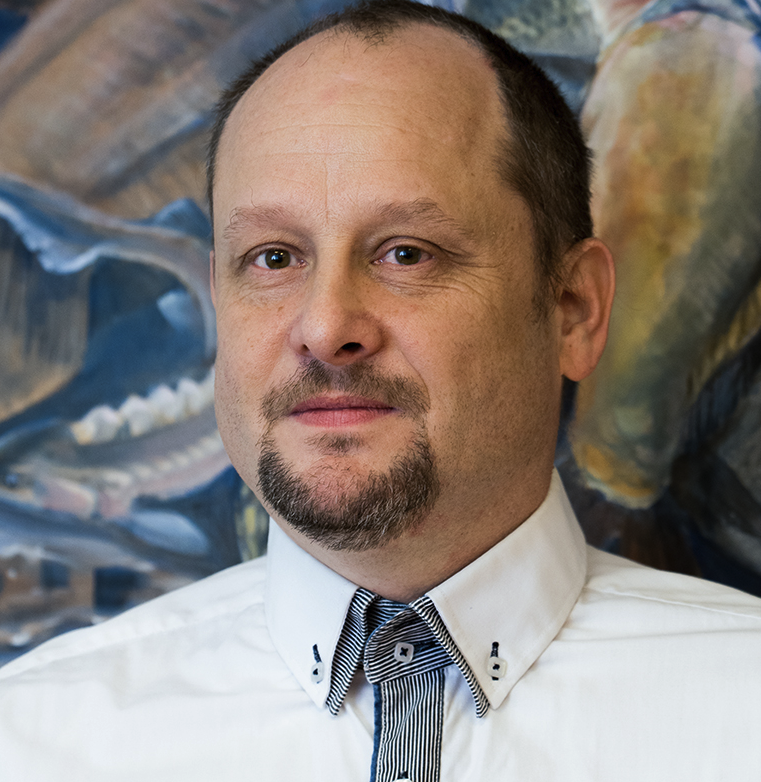Prof. Dr. Tamás Müller - MATE Research
Overview
Dr. Tamás Müller specializes in the technology development of induced spawning, larvae, and juvenile rearing under controlled conditions for economically important and endangered fish species. Currently, his primary focus is on a newly developed fish propagation method, exploring its applications in both basic knowledge and practical use. This innovative method seamlessly combines the simplicity of induced spawning with the advantages of conventional in vitro fertilization. The insemination technique holds potential for breeding programs, intra- and interspecific hybridization, and is a viable method for utilizing manipulated/cryopreserved sperm.
Research keywords:
Publications
Fish induced spawning
Testing cryopreserved European eel sperm for hybridization (A. japonica × A. anguilla)
Novel method for induced propagation of fish: Sperm injection in oviducts and ovary/ovarian lavage with sperm
Model experiment for practical application of inseminated sperm method for production of interspecific hybrids (Clarias gariepinus × Heterobranchus longifilis)
Artificial hybridization of Japanese and European eel (Anguilla japonica×A. anguilla) by using cryopreserved sperm from freshwater reared males
Fish propagation
Model experiment for practical application of inseminated sperm method for production of interspecific hybrids (Clarias gariepinus × Heterobranchus longifilis)
The effects of different hormone administration methods on propagation successes in African catfish (Clarias gariepinus)
Ovarian inseminated sperm impacts spawning success in zebrafish, Danio rerio (Hamilton, 1822) even in the absence of a male stimulus
Successful, induced propagation of African catfish (Clarias gariepinus) by ovarian lavage with sperm and hormone mixture
Embrio and larvae rearing
Ex situ protection of the european mudminnow (Umbra krameri walbaum, 1792): Spawning substrate preference for larvae rearing under controlled conditions
Ex situ conservation
Artificial propagation of the endangered Rumanian endemic warm water rudd (Scardinius racovitzai Müller 1958, Cyprinidae, Cypriniformes) for conservation needs
Artificial Sperm Insemination in Externally Fertilised Fish as a Novel Tool for Ex Situ and in Situ Conservation of Valuable Populations
Habitat establishment, captive breeding and conservation translocation to save threatened populations of the Vulnerable European mudminnow Umbra krameri
Projects
2020-2024; NKFI_K_135824, project leader
Fish propagation by using sperm insemination into ovarian lobes
Our newly developed fish propagation method, which is based on sperm insemination into the ovary using a catheter in externally fertilized fish species, enables targeted breeding efforts that were previously limited to the induced spawning method. Insemination can also be carried out using qualified or manipulated semen.
http://nyilvanos.otka-palyazat.hu/index.php?menuid=930&num=135824&lang=EN
2021-2024; 2020-1.2.4-TÉT-IPARI-2021-0001
Optimization and practical applications of new fish propagationmethods for future of fish culture
The Hungarian and Turkish partners work together on industrial application of a novel reproduction method for seabass and pikeperch based on the scientific results (insemination) of MATE researchers. The method provides the possibility to produce higher amount of fertilized eggs per unit area.
https://www.opromfish.net/?trk=public_post-text
2020-1.1.2-PIACI-KFI-2021-00328, 2021-2024
Use of special light sources and purified thermal water for the production of special horticultural and aquaculture productsű
https://palyazatok.uni-mate.hu/2020-1.1.2-piaci-kfi-2021-00328





